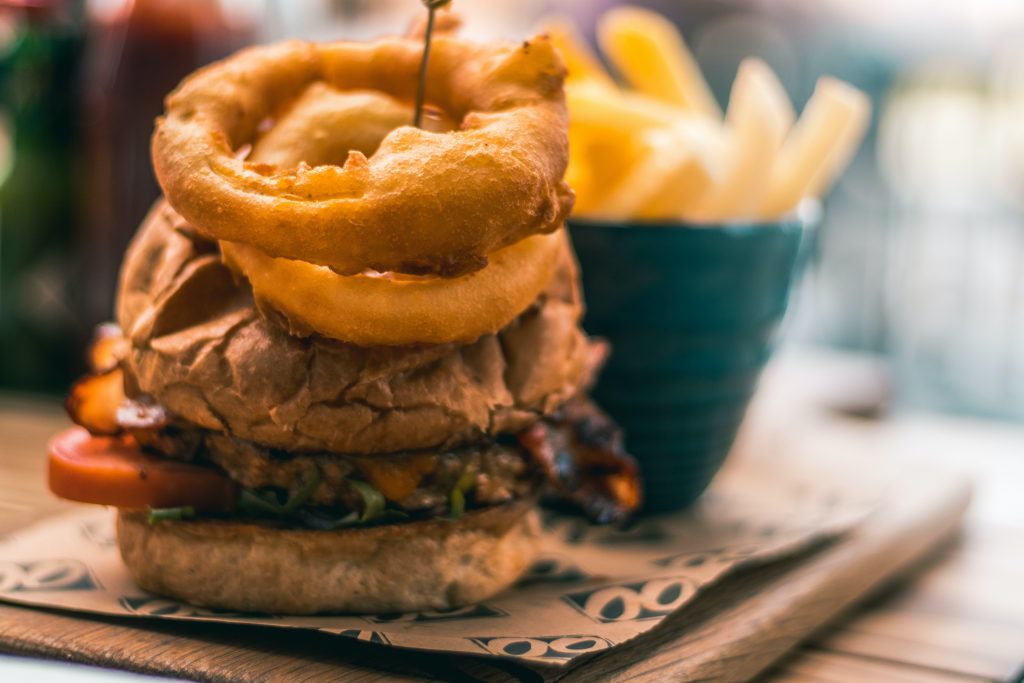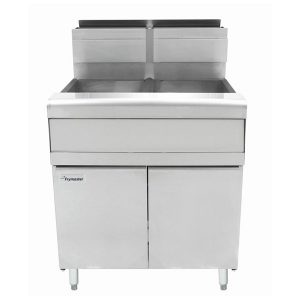What’s the best side to have with a burger? For our money, you just can’t beat a lovely batch of onion rings.
We know that onions have a tendency to give you a tear in your eye, but throw them in a commercial deep fryer and these tears can become tears of joy. Perfectly cooked onion rings should be crunchy, crispy with a soft inner, and coated with a hint of spice for a great deep fryer finish.
So, if your restaurant is looking to diversify its deep fried menu, why not consider offering a side of onion rings?
Onions – growing in popularity
Onions make up around around 9 per cent of total vegetable production in Australia.
First, a few fun facts about onions. The versatile vegetable is the country’s fourth-largest vegetable crop, making up around 9 per cent of total vegetable production, according to the Australian Horticulture Statistics Handbook 2014/2015. The same source states that we consume about 7.8 kg per capita each year.
Despite this love for onions, onion rings remain a novelty for many consumers. This could be because they are often cooked poorly with greasy or have flabby batter that creates a soggy finish.
Here’s what you need to know about deep frying the best onion rings.
Which onions are best?
Australian restaurants and cafes have access to a wide variety of onions. Of the major varieties, brown, red, white and shallots, which ones are conducive to crispy onion rings?
Generally, brown onions work best. Known as ‘all-purpose onions’, the brown variety don’t require long cooking times and produce a mellow flavour once cooked. Certain sub-varieties of sweet onions are also great for rings as they are flatter in shape and aren’t as sharp in flavour. Shallots can easily replace these types of onions in higher-end restaurants.
It’s recommended to avoid red and green onions are they better for raw garnishes and won’t stand up to the heat of a deep fryer.
What coating and seasonings to use?

Onion rings are a great additional to sharing plates.
There are many different ways to coat and season your onion rings. However, many use similar ingredients which include flour, cornmeal, buttermilk, milk, eggs and even beer.
In many cases, the kitchen staff will come up with their own original recipe that fits the feel of the menu. As long as the final product is crispy, crunchy, has a touch of spice and isn’t coated in oil, customers should enjoy the side.
Speaking of spice, there are plenty of choices. Popular spices for onion rings include garlic powder, Cajun seasoning, cayenne pepper, smoked paprika and chilli powder. Again, this will ultimately depend on the balance between the main dish and the side, and what cuisine your restaurant is going for.
How to perfectly cook onion rings?
Once you have the right types of onions, coating and seasoning, it’s all about the deep frying. Moderate-sized onion rings shouldn’t take long in a neutral oil at about 180 degrees Celsius. This is where you need a robust, reliable and quality commercial deep fryer from Frymaster.

The MJ240 twin pot fryer is a great example of the supreme Frymaster brand.
Here’s a couple of advantages of this popular brand.
- Consistent thermostat to 1 degree for fast cooking and a reliable finish
- In-built filtration to save on time and labour, and on oil costs
- Wide choice of sizes across both electric and gas models
- Limited lifetime frypot warranty for additional peace of mind
- Fully stainless steel cabinets with sturdy basket hanger that are built to last
Frymaster commercial deep fryers are ideal for restaurants of all sizes and are an investment in the future. If you would like more information about which specific model is best for your premises, feel free to get in touch with the team at Comcater.


















